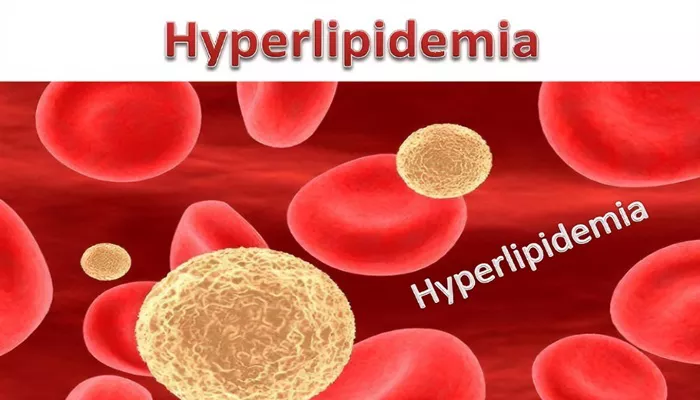Dyslipidemia and hyperlipidemia are terms often used interchangeably in cardiovascular medicine, but they have distinct meanings that are important for diagnosis, treatment, and understanding cardiovascular risk. This article aims to clarify the differences between these two conditions, explain their causes, symptoms, and treatments, and provide a clear, professional overview suitable for patients and healthcare professionals alike.
Introduction to Lipid Disorders
Lipids, including cholesterol and triglycerides, are fats essential for many bodily functions such as energy storage, hormone production, and cell membrane integrity. However, abnormal levels of these lipids in the blood can increase the risk of cardiovascular diseases like heart attacks and strokes.
Two common terms used to describe abnormal lipid levels are dyslipidemia and hyperlipidemia. Understanding the nuances between these terms helps in better managing and preventing cardiovascular complications.
What Is Dyslipidemia?
Dyslipidemia is a broad medical term that refers to an abnormal balance of lipids in the bloodstream. This imbalance can mean either elevated or decreased levels of lipids, including cholesterol or triglycerides. Specifically, dyslipidemia includes:
- High levels of low-density lipoprotein (LDL) cholesterol (often called “bad cholesterol”)
- Low levels of high-density lipoprotein (HDL) cholesterol (“good cholesterol”)
- High levels of triglycerides
- Any combination of these abnormalities
Because dyslipidemia covers both high and low lipid levels, it is considered an umbrella term for any lipid disorder that deviates from the normal range.
Causes of Dyslipidemia
Dyslipidemia can be caused by a variety of factors, which are generally divided into:
Primary (genetic) causes: These are inherited disorders such as familial hypercholesterolemia, familial hypertriglyceridemia, familial combined hyperlipidemia, and familial dysbetalipoproteinemia. Genetic mutations affect lipid metabolism, leading to abnormal lipid levels.
Secondary (acquired) causes: These include lifestyle factors like poor diet high in fats and sugars, sedentary lifestyle, obesity, diabetes, hypothyroidism, certain medications, and other medical conditions.
Symptoms and Risks
Most people with dyslipidemia do not experience symptoms initially. However, if untreated, dyslipidemia increases the risk of atherosclerosis—a condition where plaque builds up in arteries—leading to heart attacks, strokes, and peripheral artery disease. In rare cases, very high triglyceride levels can cause pancreatitis.
What Is Hyperlipidemia?
Hyperlipidemia is a subtype of dyslipidemia that specifically refers to abnormally high levels of lipids in the blood. It usually means elevated LDL cholesterol and/or triglycerides but does not include low lipid levels. Hyperlipidemia is often synonymous with “high cholesterol,” although it technically includes high triglycerides as well.
Types of Hyperlipidemia
Hypercholesterolemia: High LDL cholesterol levels.
Hypertriglyceridemia: High triglyceride levels.
Mixed hyperlipidemia: Elevated levels of both cholesterol and triglycerides, often seen in familial combined hyperlipidemia.
Causes of Hyperlipidemia
Hyperlipidemia can be caused by genetic predisposition or secondary factors such as:
- Diet high in saturated fats and sugars
- Obesity and physical inactivity
- Diabetes mellitus
- Hypothyroidism
- Certain medications (e.g., estrogens, corticosteroids)
- Alcohol consumption.
Symptoms and Risks
Like dyslipidemia, hyperlipidemia is often asymptomatic until complications arise. Severe cases may show physical signs such as xanthomas (fatty deposits under the skin) or xanthelasmas (around the eyes). The primary risk is the development of atherosclerosis, increasing the likelihood of cardiovascular events.
Key Differences Between Dyslipidemia and Hyperlipidemia
| Feature | Dyslipidemia | Hyperlipidemia |
| Definition | Any abnormal lipid level (high or low) | Specifically high lipid levels |
| Lipid abnormalities | High LDL, low HDL, high triglycerides, or low lipids | High LDL and/or high triglycerides |
| Includes | Hyperlipidemia, hypolipidemia, and other lipid imbalances | Only elevated lipid levels |
| Clinical focus | Broader lipid disorders | Focused on lipid elevation |
| Risk implications | Depends on specific lipid abnormality | Mainly cardiovascular risk from high lipids |
| Treatment approach | Tailored to type of lipid imbalance | Focused on lowering elevated lipids |
Diagnosis
Diagnosing either condition involves a lipid profile blood test measuring:
- Total cholesterol
- LDL cholesterol
- HDL cholesterol
- Triglycerides
Additional tests may include apolipoprotein levels and lipoprotein(a) for more detailed risk assessment.
Treatment And Management
Lifestyle Modifications
Both dyslipidemia and hyperlipidemia benefit from lifestyle changes, including:
- Healthy diet low in saturated fats, trans fats, and cholesterol
- Regular physical activity (30-60 minutes most days)
- Weight management
- Smoking cessation
Limiting alcohol intake.
Medications
If lifestyle changes are insufficient, medications may be prescribed, such as:
Statins: First-line drugs to lower LDL cholesterol
Ezetimibe: Reduces cholesterol absorption
PCSK9 inhibitors: For resistant or familial hypercholesterolemia
Fibrates: Mainly for high triglycerides
Niacin and bile acid sequestrants: Additional options depending on lipid profile.
Treatment goals focus on lowering LDL cholesterol, raising HDL cholesterol, and reducing triglycerides to minimize cardiovascular risk.
Conclusion
Dyslipidemia is a broad term describing any abnormal lipid level in the blood, whether high or low, while hyperlipidemia specifically refers to elevated lipid levels. Both conditions are significant risk factors for cardiovascular disease and require early diagnosis and management. Understanding these differences helps healthcare providers tailor treatment strategies effectively and helps patients grasp the importance of lipid control in maintaining heart health.
Related topics:


